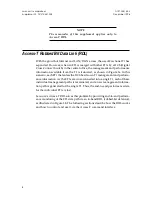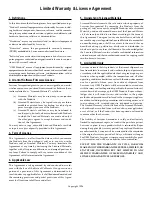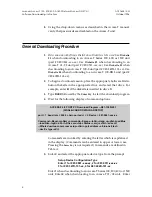
•
Port 1 Remote:
Access-T declares a Port 1 Remote alarm when it
receives a Port 1 LOF indication from the far-end device (similar to
Yellow Signal).
For instructions on how to set up and view alarms, refer to Chapter 6 of the
Access-T Installation and Operation manual: ACST-0351-005.
RDL 24-Hour Registers and One-Hour Statistics
All Access-T models—including Access-T RDL—provide a standard set of
24-hour register groups: Telco, User, Aux, FDL Telco, and FDL User. Access-T
RDL provides additional end-to-end performance monitoring of the fractional
data path with a CRC-4 and four more register groups: RDL Telco, RDL User,
RDL Local,
and RDL Remote. These extra register groups are described in the
following sections.
RDL Telco and RDL User Registers
The RDL Telco and RDL User registers use the same performance parameters
and return the same information as the FDL Telco and FDL User registers—the
only difference is that the information is requested and received via the RDL
rather than the FDL.
RDL Local and RDL Remote Registers
The RDL Local and RDL Remote registers are the DTE registers for the local and
remote Access-T RDL units, respectively. These registers are patterned after
those described in AT&T Publication 54016 (T1 ESF); however, they are not the
same—there are several significant differences in the way they are calculated,
as described below.
•
Errored Seconds (ES):
For the RDL, this is a second that has one or
more channel framing or CRC-4 errors, but is not counted in the
Unavailable Second (UAS) register.
•
Bursty Errored Seconds (BES):
For the RDL, this is a second that has
two or more CRC-4 errors and no channel framing errors.
•
Severely Errored Seconds (SES):
For the RDL, this is a second that
either has a channel framing error or a CRC-4 error count correspond-
ing to a 7 x 10-4 bit error rate, but is not counted in the UAS register.
Larscom Incorporated
ACST-0351-S53
Supplement 3, ACST-0351-005
December 1996
12
















































